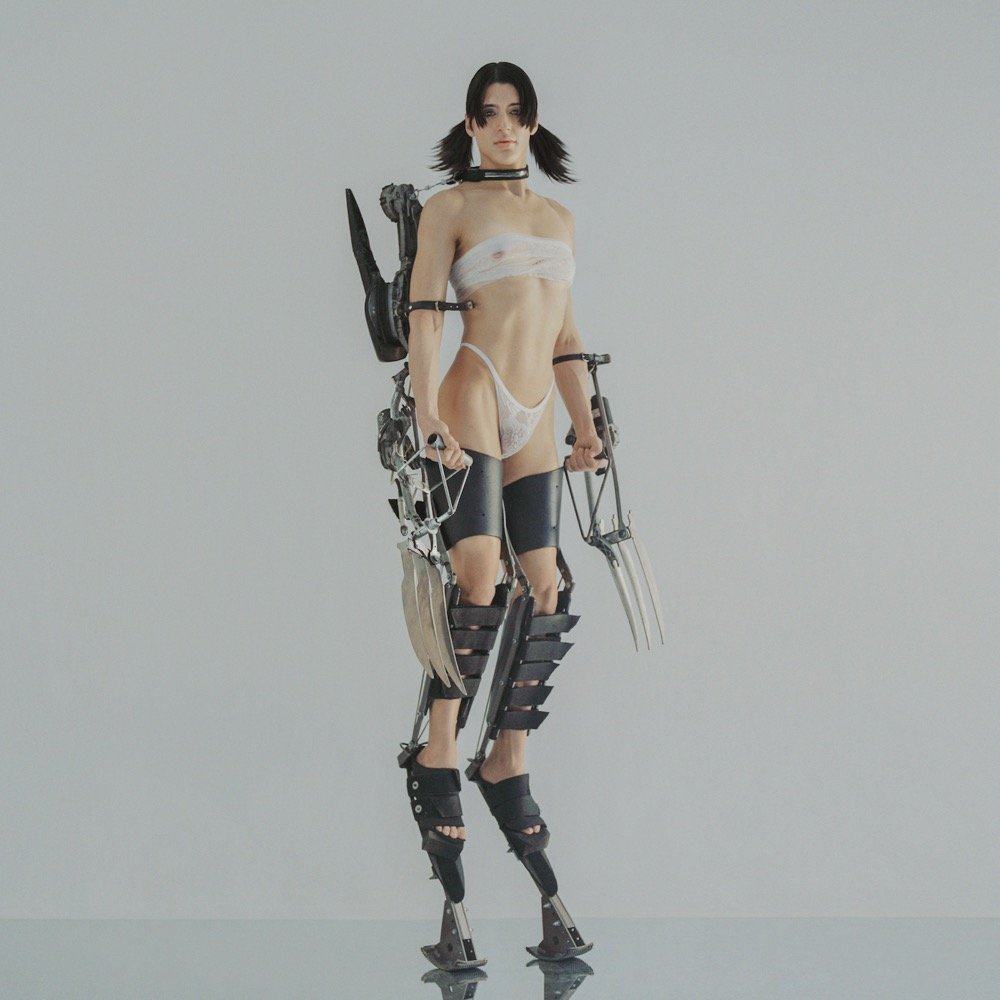Rewriting Humanism:
Arca, Posthumanism, and Gender Acceleration
by Jay Dye
KiCk i

Arca's KiCk i album artwork, featuring her in a cyber-satyr outfit featuring metallic claws and hooves.
Arca appears prominently on the cover art for KiCk i in an elaborate outfit equipped with metal claws and prosthetic leg extensions resembling satyr hooves.
These leg prosthetics function as a repurposing of myth for her own ends, replacing the humanist flesh-and-bone with cybernetic augmentations evoking both the past and the future simultaneously. As a trans woman, her body is already melded with technology through hormone therapy and surgery; in this context, leg prosthestics are simply another form of body modification no different than the increasingly-normalized process of transition. While "[c]is queerness can, and very often does, impose this humanist purity of the body onto trans people in a highly fascist fashion," Arca disregards any notion of purity to create her body the way she wants (n1x). In contrast to the fascist rigidity of cis existence, this is rhizomatic queerness, always looking to form new connections. After all, "[g]lobal techno science reduces everything into an artifact, a thing made not born" (Graham 229). We, as cyborgs, have already been constructed by technology past any notion of the natural.

Arca wears the suit in a behind-the-scenes video from the KiCk i album cover shoot
Arca's claws function as an expansion/extension of the feminine-coded act of having acrylic nails. While it is considered feminine to extend the fingernails in such a way, Arca takes it a step further, clutching metal claws in her fists that extend past her knees. The claws don't immediately read as masculine or feminine, but as cyborg. They perhaps evoke the masculine character of X-Men's Wolverine, yet are simultaneously reminiscent of nail extensions. Interestingly, they take the feminine concept of nails and lengthen them in a manner which might be considered phallic, merging feminine and masculine expressions with the cold steel of technology to create a distinctly posthuman, post-gender appearance.
The sum effect is to rewrite myth for a posthuman era. In this image, she exists simultaneously in the past and the future, repurposing the fantastic images of mythic Others from the past to create a new mythic Other for a posthuman future.
Choose Your Level